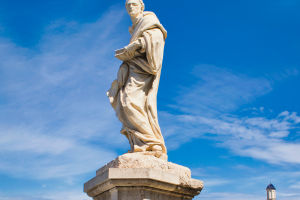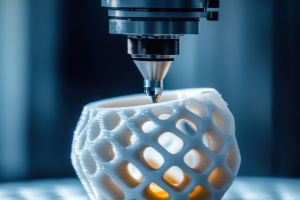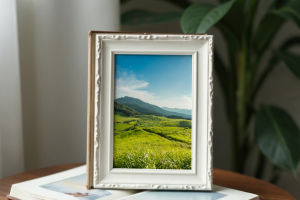Why do some cities feel unforgettable even after just one visit? Think of Chicago's "Cloud Gate," Barcelona's surreal Gaudí landmarks, or the whimsical statues of Reykjavik.
They're more than eye-catching—they anchor identity. Public sculptures aren't simply decorations in open spaces. They are storytellers, place-makers, and symbols of shared memory.
Let's explore how sculptures play a specific and powerful role in shaping city identity and deepening cultural belonging.
The Power of Presence in Everyday Space
Unlike art locked behind gallery doors, public sculptures are constantly visible. This means their influence builds slowly but surely, day by day. Whether it's a statue in a roundabout, a memorial in a park, or a modern installation near a transit hub, each piece interacts with thousands of people daily. Over time, these visual cues become part of how residents and visitors feel about the place.
Take the example of the "Guardian of the North" in Gateshead, UK. This towering steel sculpture by Antony Gormley was initially controversial. But over time, it became a symbol of the region's strength and resilience—often appearing in local promotions and branding. It proved that a sculpture could evolve from a curiosity into a cultural landmark.
Sculpture as a Cultural Mirror
Public art often reflects a city's history, struggles, and aspirations. Through sculpture, a city can highlight the people, ideas, and values it cherishes.
The "Fremont Troll" under a Seattle bridge isn't a traditional monument. It's humorous, a little creepy, and totally unique—just like the offbeat neighborhood it resides in. It tells outsiders, "This place is creative and quirky." That's cultural branding through sculpture.
Meanwhile, memorial sculptures—such as Berlin's "Stolpersteine" (small cobblestone memorials to Holocaust victims)—remind residents and tourists alike that a city acknowledges its past with humility and responsibility. Such installations can foster deep emotional connections and social dialogue.
Creating Belonging Through Interaction
Sculptures aren't always meant to be admired from afar. The best ones invite interaction. You can walk through them, sit on them, pose beside them—or even climb them (with permission, of course).
Chicago's "Cloud Gate" (aka The Bean) is a perfect example. This reflective bean-shaped sculpture does more than reflect the skyline; it reflects you. People visit to see themselves in the city, quite literally. This act of physical and visual interaction strengthens the sense that this public space "belongs" to the people.
Such sculptures are not passive—they become social nodes. People meet there, rest there, photograph themselves there. These daily micro-experiences become part of the emotional texture of city life.
Urban Planning Meets Public Art
Sculptures are not randomly dropped into open spaces—they're part of urban design strategy. When used thoughtfully, they can:
1. Anchor public plazas and squares
2. Visually break up dense urban spaces
3. Enhance navigation and wayfinding
4. Create pause points in fast-paced areas
For example, Jaume Plensa's "Crown Fountain" in Chicago isn't just a sculpture—it's a water feature, a performance space, and a place for kids to play. This is public art doing urban work: shaping how people move, gather, and play.
Many urban planners now collaborate with artists from the start, integrating sculpture into transportation hubs, shopping areas, and waterfronts. It's a shift from "art as decoration" to "art as structure."
Economic and Social Returns
It might surprise some to learn that public sculptures have economic impact. Iconic art can drive tourism, boost local businesses, and increase neighborhood property values. Cities like Bilbao, Spain, saw massive growth after installing large-scale public art around the Guggenheim Museum. The city didn't just get art—it got a new identity.
Moreover, sculpture projects often involve community participation—from local artists being commissioned, to residents giving input on design. This can foster a stronger sense of ownership and civic pride.
Not All Sculptures Work—And That's Okay
It's worth noting that not every sculpture succeeds. Some are criticized for clashing with their surroundings or lacking meaning. But even controversy can be productive—it sparks public debate and encourages civic engagement. In many cases, sculptures that were once hated become beloved over time, precisely because people talked about them.
The Future: Interactive, Digital, Local
As cities become smarter and more connected, public sculptures are evolving too. Some new concepts are beginning to incorporate digital and kinetic designs that move, light up, or respond to environmental data. Some new concepts are beginning to incorporate augmented reality (AR) layers, adding stories accessible via mobile devices.
And more cities are pushing to feature local voices—artists who reflect the lived experience of the community.
This shift means that public art will likely become even more participatory, layered, and meaningful in the years ahead.
So, What Does Your City Say About You?
Next time you walk through your city, take a moment to look at the sculptures around you. What are they saying—about your city's past, its personality, and its people? And more importantly: do you feel included in that story?
Public sculpture isn't just an object—it's a message.
When chosen thoughtfully, sculptures give citizens a mirror, a memory, and a map of identity.
What sculptures have stood out to you in your travels or your hometown? Would you change any of them—or add something new? Let's keep that conversation going.


